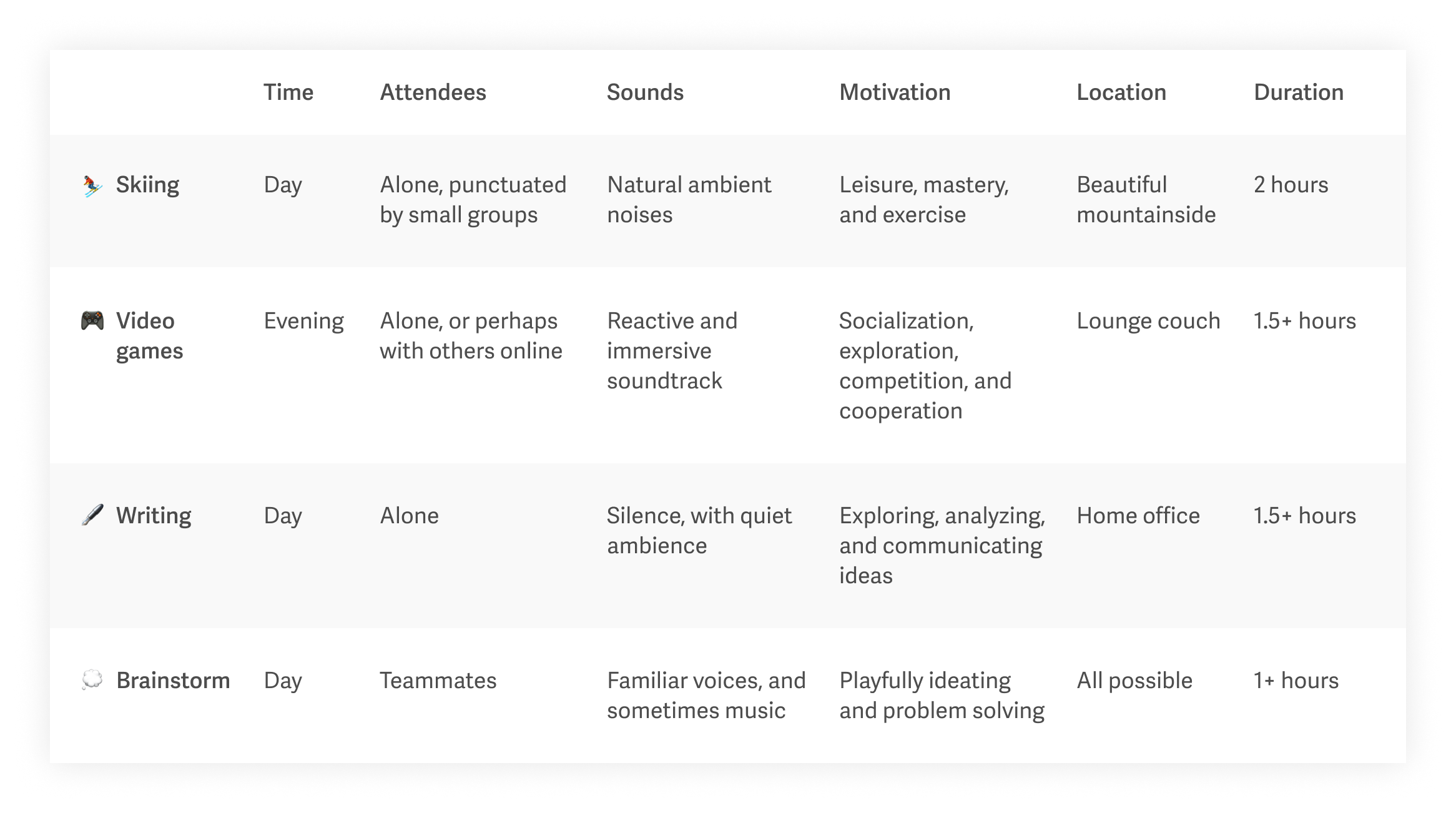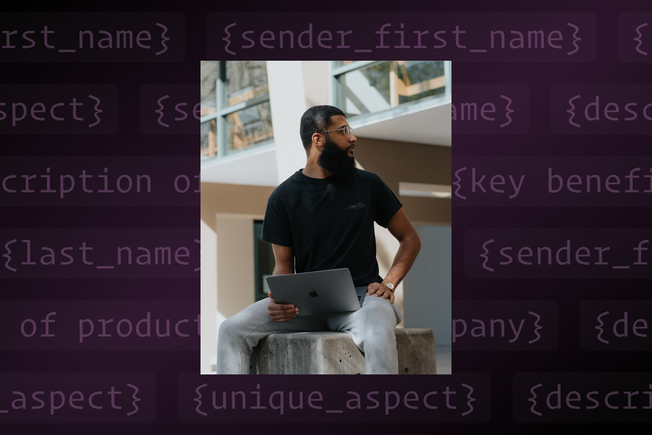
We've all been there: staring at a blinking cursor, hoping that inspiration will strike!
But instead of launching into our task, we feel distracted, unmotivated, or lost in the disorderly maelstrom of our own thoughts.
I previously wrote about designing experiences that create flow. Flow is an elusive mental state that turns work into play, and which can make you 5x more productive.
But how do you design flow into your own life?
Autotelic personalities find it easier to reach flow
Descriptions of flow can make it sound whimsical: enjoyed only by artists, Olympians, and virtuoso musicians. In reality, how easily you find flow depends on your personality.
The people who find flow most easily have autotelic personalities. They tend to do things for the sake of doing them, rather than for the end results. They are curious, persistent, and are both open to novelty while being able to concentrate narrowly — qualities that make it easier to achieve flow's intense focus on the present.
The framework for finding flow
The good news: anyone can use this framework to regularly find flow.
- Step 1: Identify your current flow activities.
- Step 2: Analyze themes and build your personal "flow strategy".
- Step 3: Embed your flow strategy by stacking productive habits and information sharing.
Let's jump in…
Step 1: Identify your current flow activities
There are 3 conditions necessary for flow:
- The next action is obvious.
- You have clear and immediate feedback with no distractions.
- You experience a balance between high perceived challenge and high perceived skill.
Ask: when do the 3 conditions for flow occur in your own life?
Reflect on occasions when you have either achieved flow, or came close to achieving it — whether at work, at home, or when practicing a hobby.
These are your flow activities. By analyzing them, you can build a strategy to achieve flow frequently.
A classic example: skiing!
- There's nothing but pillowy snow ahead, and the only way is downhill (condition #1, the next action is obvious).
- From the sensation of your skis on the terrain, you can feel the nuances of the mountain and get a sense of how well you're doing (condition #2, clear and immediate feedback). The only sounds are rushing air and the swishing of your skis — nothing can pull your mind from the experience (condition #2, no distractions).
- The mountain is steep, and there are obstacles to navigate (condition #3, high perceived challenge). But you're in the zone, and you can rise to the challenge (condition #3, high perceived skill), zipping between trees and slaloming around snowboarders.
Step 2: Analyze themes and build your personal "flow strategy"
Not every task can mimic the euphoria of thundering down the Rocky Mountains!
But by identifying the common themes of your flow activities, you can design your own personal flow strategy — and use it to reach flow more easily.
Ask: what themes do your flow activities have in common?
Where are you, and who is present? What is happening around you?
By identifying common themes, you can design flow into your day.

Perhaps, like me, you are most likely to hit flow solo, during daylight hours, with ambient and immersive sound, and when you have 1.5 hours or more to devote to a single activity.
But it could be the opposite: many people achieve flow most regularly in groups, deriving energy from others and riffing off their ideas — a phenomenon known as team flow.
Step 3: Embed your flow strategy with habit stacking and information sharing
You can now weave your flow strategy into your everyday life. There are 2 ways to do this: habit stacking and visible habits.
Habit stacking
You can leverage your existing habits to build new, better habits — habits that maximize your chances of achieving flow.
For example…
- Existing habit: Weekly team meeting.
- Flow strategy: 1.5 hours of solo time, in the morning, with natural ambient sounds.
- Habit stacking: Add a recurring "focus" calendar block immediately after your weekly team meeting. When you see the "focus" reminder in your calendar, this is your cue to be alone for 1.5 hours, switch off notifications, and play natural ambient sounds.
Visible habits
Visible habits are easier to maintain than unstated ones.
At Superhuman, we ask every person on the team to create a user manual for working with them effectively. This communicates to the rest of the team what helps them do their best work — and how they hit flow.
With habit stacking and visible habits, you can embed your flow strategy into your everyday life — and dramatically increase your opportunities to achieve flow.


